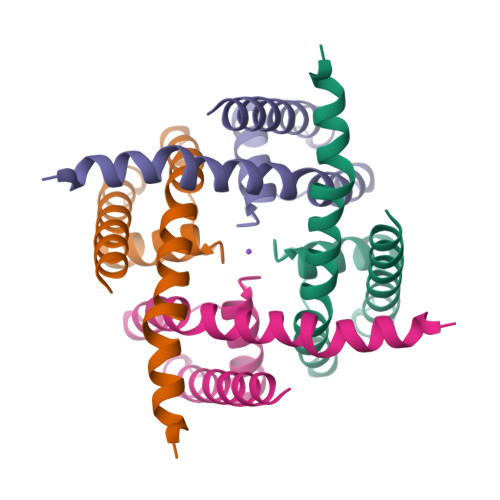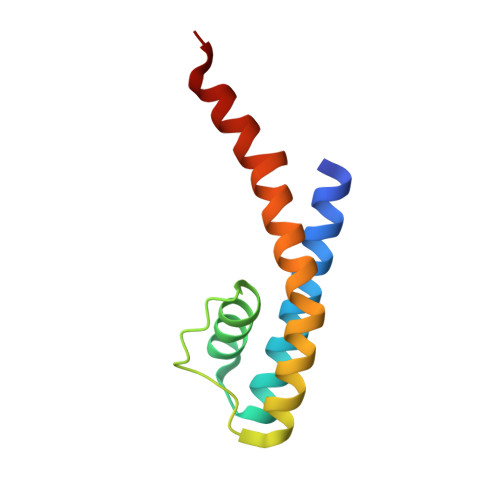Protein interactions central to stabilizing the K+ channel selectivity filter in a four-sited configuration for selective K+ permeation.
Sauer, D.B., Zeng, W., Raghunathan, S., Jiang, Y.(2011) Proc Natl Acad Sci U S A 108: 16634-16639
- PubMed: 21933962
- DOI: https://doi.org/10.1073/pnas.1111688108
- Primary Citation of Related Structures:
3T1C, 3T2M, 3T4D, 3T4Z, 3TCU, 3TET - PubMed Abstract:
The structural and functional conversion of the nonselective NaK channel to a K(+) selective channel (NaK2K) allows us to identify two key residues, Tyr and Asp in the filter sequence of TVGYGD, that participate in interactions central to stabilizing the K(+) channel selectivity filter. By using protein crystallography and channel electrophysiology, we demonstrate that the K(+) channel filter exists as an energetically strained structure and requires these key protein interactions working in concert to hold the filter in the precisely defined four-sited configuration that is essential for selective K(+) permeation. Disruption of either interaction, as tested on both the NaK2K and eukaryotic K(v)1.6 channels, can reduce or completely abolish K(+) selectivity and in some cases may also lead to channel inactivation due to conformational changes at the filter. Additionally, on the scaffold of NaK we recapitulate the protein interactions found in the filter of the Kir channel family, which uses a distinct interaction network to achieve similar stabilization of the filter.
Organizational Affiliation:
Department of Physiology, and Howard Hughes Medical Institute, University of Texas Southwestern Medical Center, Dallas, TX 75390-9040, USA.




















